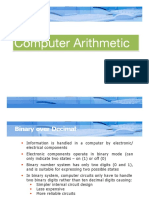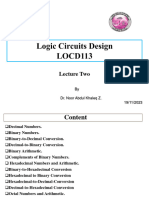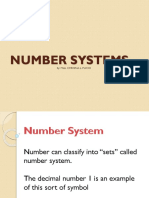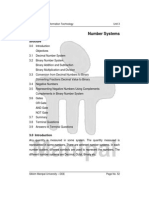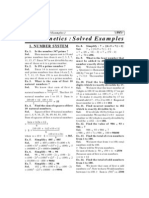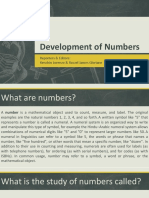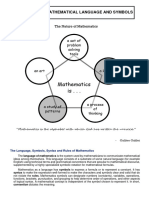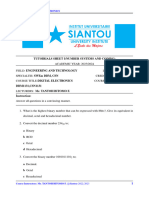0% found this document useful (0 votes)
19 views37 pagesL-4 Computer Arithmetic
This document provides an overview of computer arithmetic focusing on binary numbers, including reasons for using binary over decimal, and the basic arithmetic operations: addition, subtraction, multiplication, and division. It explains the binary number system, its components, and the rules for performing arithmetic operations in binary. Additionally, it introduces the concept of complementary subtraction and the use of 2's complement notation for representing negative numbers.
Uploaded by
Md. Selim HasanCopyright
© © All Rights Reserved
We take content rights seriously. If you suspect this is your content, claim it here.
Available Formats
Download as PPTX, PDF, TXT or read online on Scribd
0% found this document useful (0 votes)
19 views37 pagesL-4 Computer Arithmetic
This document provides an overview of computer arithmetic focusing on binary numbers, including reasons for using binary over decimal, and the basic arithmetic operations: addition, subtraction, multiplication, and division. It explains the binary number system, its components, and the rules for performing arithmetic operations in binary. Additionally, it introduces the concept of complementary subtraction and the use of 2's complement notation for representing negative numbers.
Uploaded by
Md. Selim HasanCopyright
© © All Rights Reserved
We take content rights seriously. If you suspect this is your content, claim it here.
Available Formats
Download as PPTX, PDF, TXT or read online on Scribd
/ 37







